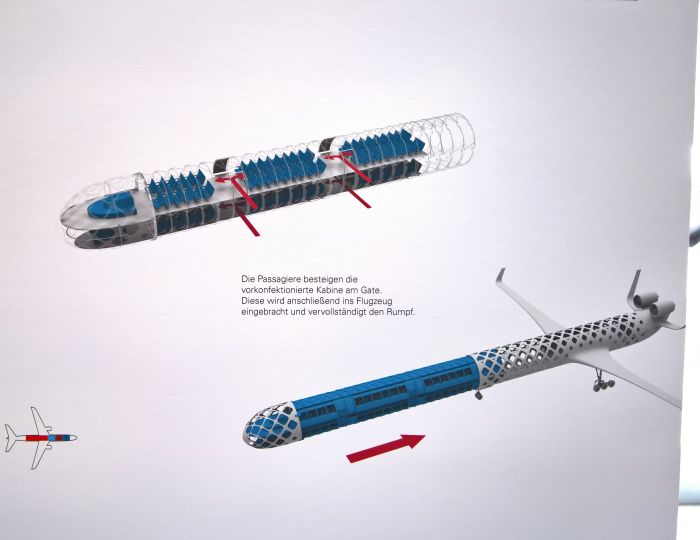Without wanting to in any way detract from the work undertaken by Kunsthochschule Berlin Weissensee students in the past year, a highlight of our visit to the 2017 Rundgang summer exhibition was the thunderstorm which broke while we there. Calling it biblical would be to trivialise the ferocity with which it smit the day asunder, turning in its fury the Bühringstraße in front of the school into a Bühring Straits. And the first of three storms which broke over Berlin in quick succession, almost sinking the German capital.
Magnificent, imposing and a joy to behold. But would the 2017 Rundgang also make such a positive and lasting impression........?
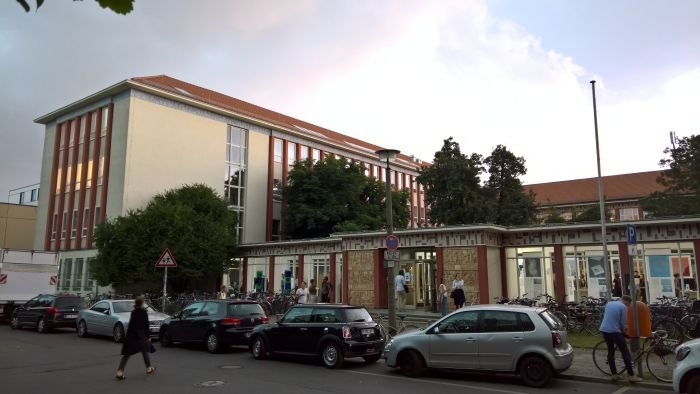
As we've oft noted in these pages, the history of the Kunsthochschule Berlin, KHB, Weissensee is in many regards the embodiment of the development of design in post world-War II eastern German. Indeed so often have we noted it, that rather than do it again we refer you dear reader to our Kunsthochschule Berlin Weissensee Rundgang 2016 post where the school's development is briefly summarised. And to our notes on the so-called Formalism Debate, which places it a bit more in context.
And skip swiftly on to the 2017 Rundgang.
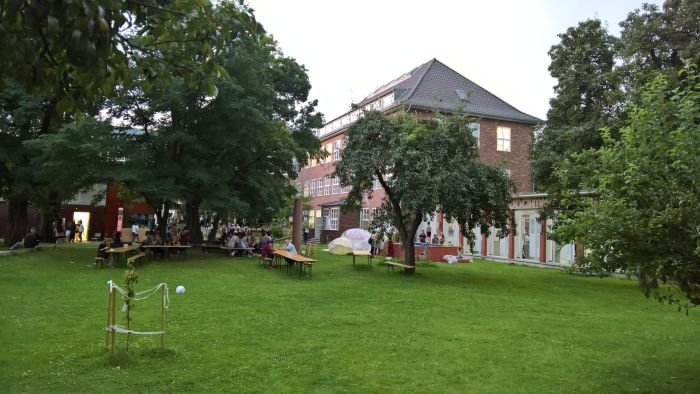
Visiting the annual summer Rundgang exhibition at the KHB Weissensee always reminds us of visiting that slightly hippy, bit screwball, artistically inclined friend of your parents whose house is the most endearing ramshackle. Which isn't to say the showcase is disorganised, it isn't, but it is to say that it is everywhere, the rooms and corridors bulging as they attempt, or perhaps better put, fail, to contain the mass of works being presented.
Works which in context of the 2017 Rundgang included semester and graduation projects from across the school's art, design and fashion courses, including semester projects such as, the self-explanatory Clay-Stone-Earth. Designing with Regional Material; Food and the City, which imagined future relations to food and eating, results of which can also be seen as part of the exhibition Food Revolution 5.0. Design for Tomorrow’s Society at the Museum für Kunst und Gewerbe Hamburg; and Short Escape, realised in conjunction with the medical and safety technology firm Dräger, and which asked for the development of breathing apparatus solutions intended only to be used for a short period of time while people escape emergency situations.
As ever, such a design school end of year exhibition is never primarily about what resulted, but for all how the school teaches, what the school teaches, how the students respond and the way they develop their projects, and/or responded to a set brief. That said.....
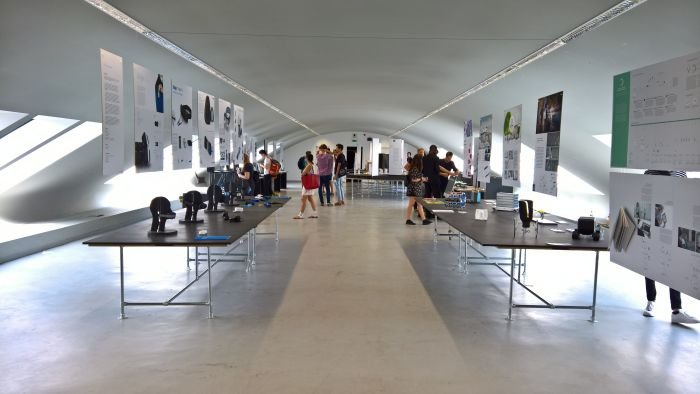
There is nothing quite like the heat from a ceramic stove, yet ever since the smow blog moved into a flat with central heating we simply couldn't go back to our old stove. For delightful as it is, we won't miss the daily lugging of coal up from the cellar, the inevitable dust and stour, nor the fact that if you are away for a couple of days in winter, it takes a good week to get the flat back up to an agreeable temperature.
But the heat from warm ceramic is an unparalleled joy.
And one Robin Hoske proposes a return to with his project Extrudow.
In essence Extrudow replaces the conventional metal of wall mounted radiators with specially developed ceramic tiles; the warm water that currently flows though your radiators heating the metal, heating the tiles. Which then radiate their pleasant warmth into the room.
Which sound just a little too obvious to work.
But one has to assume Robin has done the math and is convinced it can work. And if it can, and as anybody who has ever luxuriated in the glow of a ceramic stove will concur, it has to be an idea worth pursuing.
In addition to the heat the other, potential, advantage of the project is that it allows for radiators other than simple wall mounted devices, and for all, the incorporation of the heating as a decorative feature.
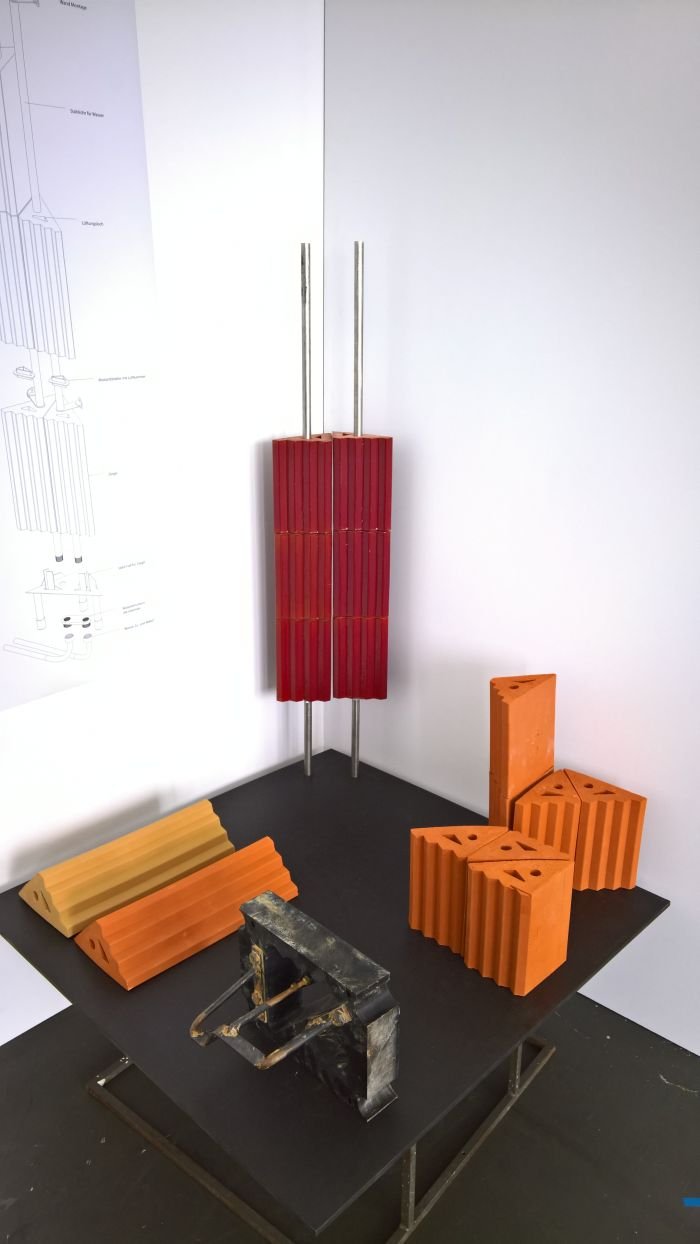
Back at the Hochschule Wismar we were introduced to the project De Bloom by Miriam Müller which sought to use the principle of condensation to harvest water from the atmosphere. With her Droplet Harvest project Ursula Jarero ups the scale and proposes using buildings, specifically their facades, to harvest ambient water.
The idea of water harvesting buildings isn't in itself new, but there is a charming simplicity, universality and accessibility about Ursula's concept: 3D printed ceramic tiles are attached to the building exterior, their form providing a surface on which that water which is near fluidity can condense.
As far as we could ascertain the project hasn't moved beyond the theoretical, and, we would imagine, the most obvious difficultly is going to be collecting and storing the thus won water; however, if a convenient system can be found, there would appear to be very few arguments against such an idea. What particularly appeals to us is the possibility of using the thereby collected water in situations where drinking quality isn't required, specifically toilet flushing, but also for cleaning floors, cleaning windows, watering plants..........
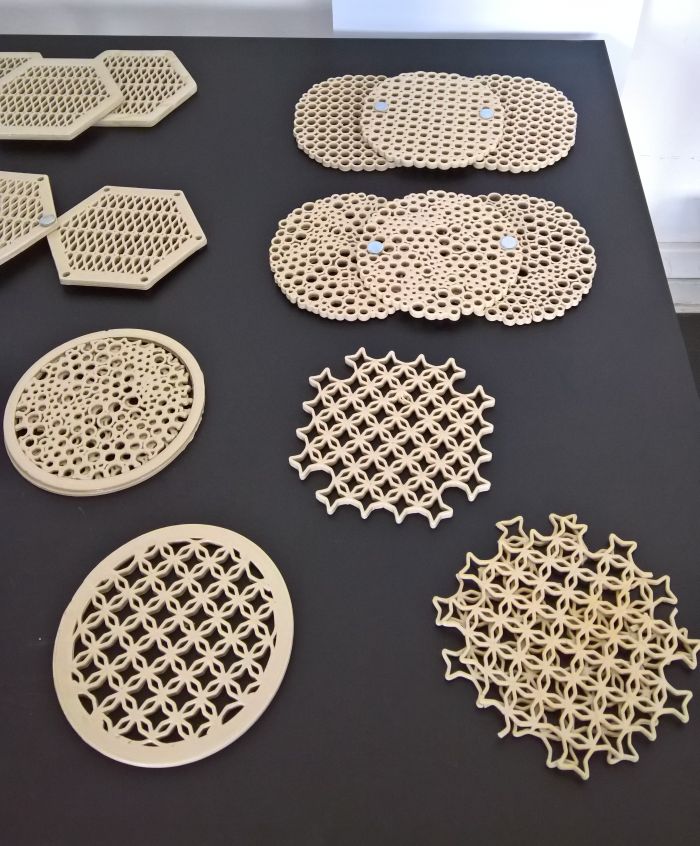
We long considered whether or not to include Paul Pötzelberger's Masters Thesis in this review..... before deciding we had to.
Ridiculous as it is.
For ridiculous as it is, there is the most satisfyingly delicious logic and beauty to it.
Considering how air transport can best evolve in order meet ever increasing passenger numbers Paul choose a thoroughly radical, yet thoroughly obvious, solution: modular aircraft.
Essentially Paul proposes decoupling the aircraft interior from the exterior: the interior, the cabin, being a removable tube which slots into the exterior fuselage. Passengers board the cabin as usual, unusual being it isn't part of an actual aircraft but a free standing element. When a plane lands its cabin is removed, the new cabin inserted into the now empty fuselage. And off they go.....
Obviously we don't want to be the ones tightening the bolts.
The advantage, according to Paul, is that whereas currently an airline cabin layout is fixed, or at least can only be altered with great effort and cost, such a modular system means a cabin can be individually configured according to the passenger numbers, passenger mix and/or required freight capacity on a particular flight. And then reconfigured for its next.
Which makes a lot of sense.
And is ridiculous.
In many regards analogous to the project The New Experience of the Train by Heman Xia from the Chelsea College of Arts Summer Show, Flexibilität in der Luftfahrt feels for us like the start of a development process which could lead to something perhaps less radical, but just as revolutionary.
Less air travel is of course the other solution...... Or are we now the ones being ridiculous.....?
Full details on the Kunsthochschule Berlin Weissensee can be found at www.kh-berlin.de
